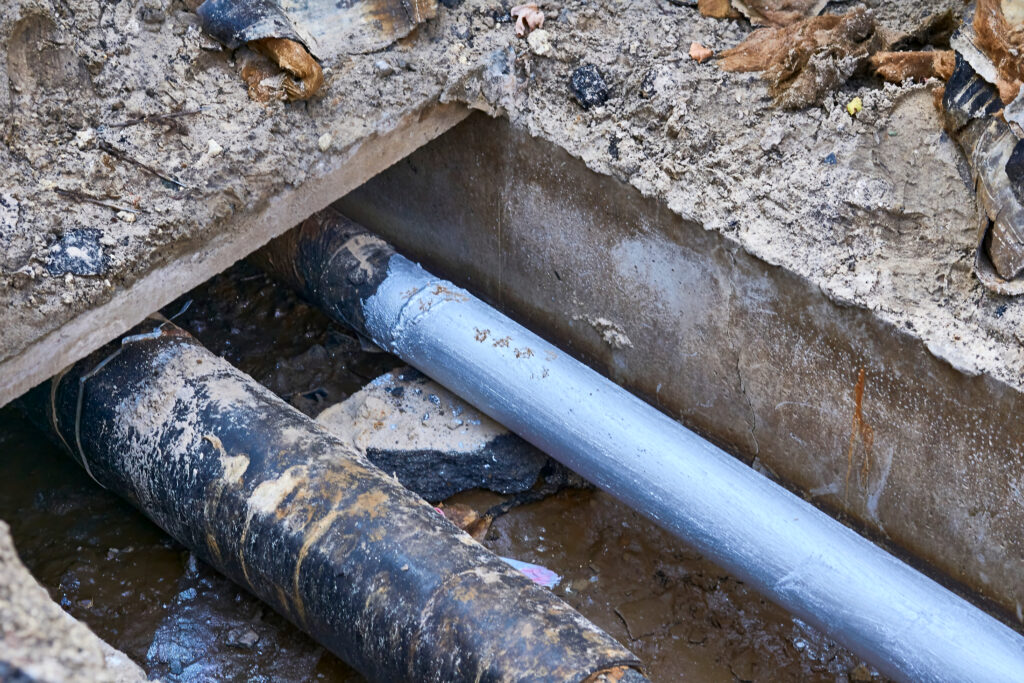As temperatures drop, the risk of burst pipes becomes a real concern for homeowners. To prevent burst pipes in winter, it’s crucial to insulate exposed pipes, seal any drafts in your home, and keep a consistent indoor temperature. Regularly allowing faucets to drip can also relieve pressure in the plumbing system, reducing the chances of a burst. Additionally, addressing issues like a frozen drain pipe promptly can help avoid further damage. Preventing burst pipes requires a combination of preparation and proactive maintenance, especially when extreme weather is on the way.
1. Insulate Your Pipes
One of the simplest yet most effective ways to prevent burst pipes is through pipe insulation. Insulate pipes located in unheated areas, such as basements, attics, or garages, using foam pipe sleeves or fiberglass insulation. Proper pipe insulation helps retain heat, lowering the risk of frozen pipes.
2. Keep Your Home Warm, Even When Away
Maintaining a steady temperature is essential in winter plumbing. If you’re planning to leave for an extended period, set your thermostat to at least 55°F. This will ensure that your home stays warm enough to prevent pipes from freezing, significantly reducing the risk of burst pipes.
3. Open Cabinet Doors to Allow Warm Air Circulation
For pipes situated under kitchen and bathroom sinks, open cabinet doors to allow warm air to circulate around the pipes. This small action can prevent frozen pipes by maintaining a warmer ambient temperature in those areas.
4. Seal Any Gaps or Drafts
Drafts from poorly insulated walls or unsealed gaps can expose pipes to cold air, increasing the likelihood of frozen pipes. Seal any gaps around windows, doors, and walls near plumbing lines to maintain a stable indoor temperature. Addressing these areas of your home enhances your winter plumbing and helps to prevent pipe bursts.
5. Use Heating Tape on Exposed Pipes
Heating tape is an effective solution for pipes prone to freezing. It applies direct heat to the pipes, keeping them warm during cold spells. However, be sure to follow the manufacturer’s instructions carefully when applying heating tape to avoid overheating or electrical hazards.
6. Locate and Know How to Use the Main Shutoff Valve
In the event of a burst pipe, knowing where your home’s main water shutoff valve is can prevent further water damage. Familiarize yourself with its location (often under the kitchen sink or near the water heater) and ensure that everyone in your household knows how to turn it off in an emergency.
7. Drain Outdoor Faucets and Disconnect Hoses
Outdoor faucets and hoses are highly susceptible to freezing and burst pipes. Before winter hits, drain any outdoor faucets and disconnect all hoses. For extra protection, install faucet covers to shield them from freezing temperatures, which can lead to burst pipes if left unprotected.
8. Leave the Tap Dripping in Extreme Cold
Leaving a slight drip on faucets connected to vulnerable pipes can prevent frozen pipes. A small flow of water keeps pressure from building up, reducing the risk of burst pipes. This is especially useful on nights when temperatures are expected to drop below freezing.
9. Regularly Check for Pipe Leaks or Weak Spots
Routine maintenance checks are crucial to detect potential weaknesses. Look for damp spots or water stains that could indicate a slow leak. Addressing these issues promptly ensures your winter plumbing is robust and resilient to freezing temperatures.
10. Install a Leak Detection System
A leak detection system can alert you to potential problems before they turn into major issues. These systems monitor water flow and detect unusual patterns, which could indicate leaks or burst pipes. Installing one can help avoid significant damage by notifying you early on.
FAQs For How to Prevent Burst Pipes
Q1: What should I do if I suspect a pipe is frozen?
If you suspect a frozen pipe, first locate the pipe and apply heat using a hairdryer, hot towel, or heating pad. Start from the area closest to the faucet and work your way backward. Avoid using open flames or high-heat tools, as they can damage the pipe.
Q2: Why is it necessary to keep my home at 55°F, even when I’m away?
Keeping your thermostat at a minimum of 55°F ensures that your home is warm enough to prevent frozen pipes. When temperatures drop too low, stagnant water inside the pipes can freeze, expanding and increasing the risk of a burst pipe.
Q3: Are there specific areas in my home where pipes are more likely to freeze?
Yes, pipes located in unheated spaces such as basements, attics, garages, and exterior walls are most vulnerable to freezing. Ensuring these pipes are well-insulated or heated can help prevent pipe bursts in these areas.
Winter-Proof Your Home’s Plumbing
Protecting your pipes from the cold is a critical aspect of winter plumbing that can save you time and money. Don’t wait for a burst pipe to take action; by taking these proactive steps, you can enjoy a safer, warmer winter. Remember, a well-insulated home, steady heating, and careful maintenance will go a long way in keeping your pipes intact.
Visit Hale Home Services for more information on prevent burst pipes this winter and ensuring your plumbing system stays reliable.

